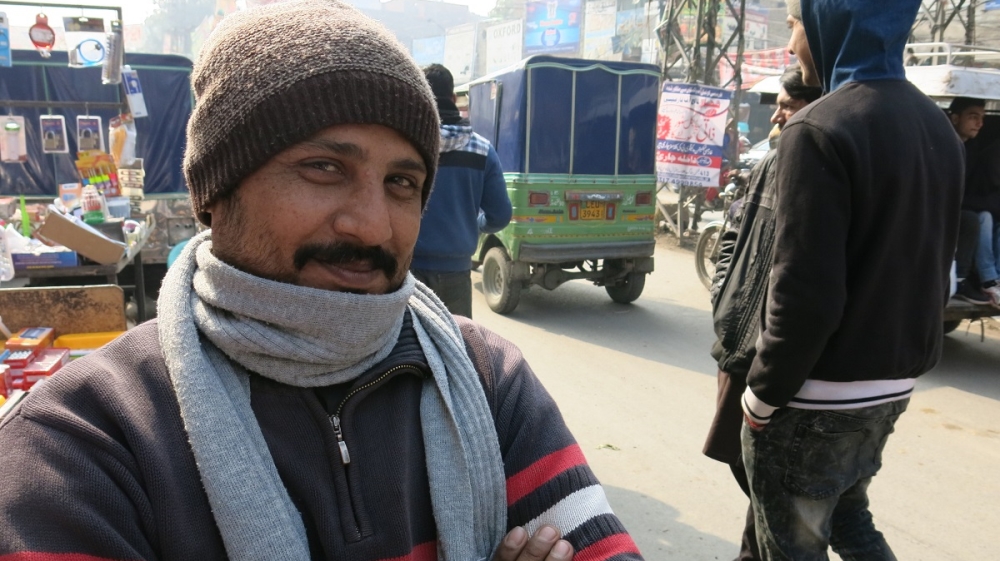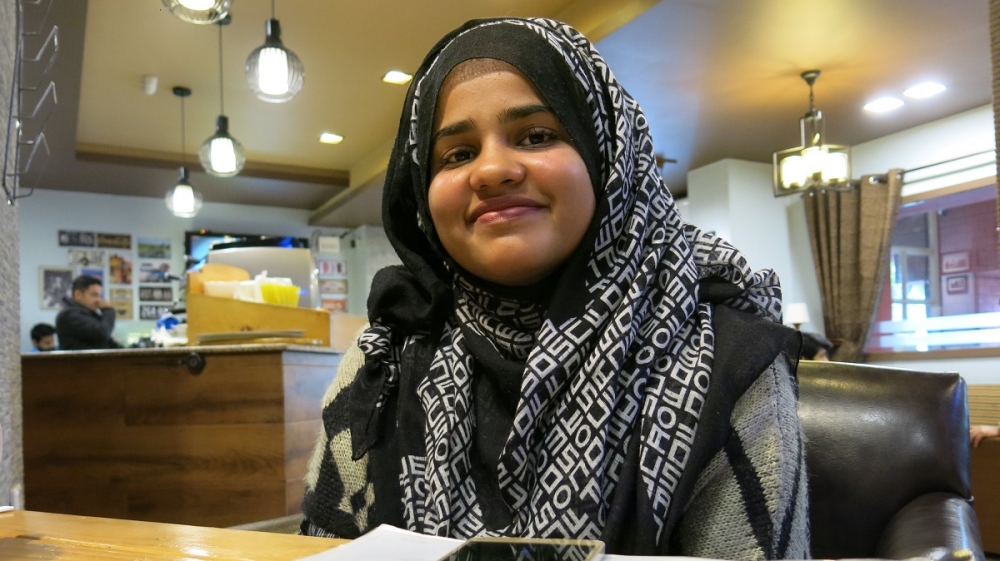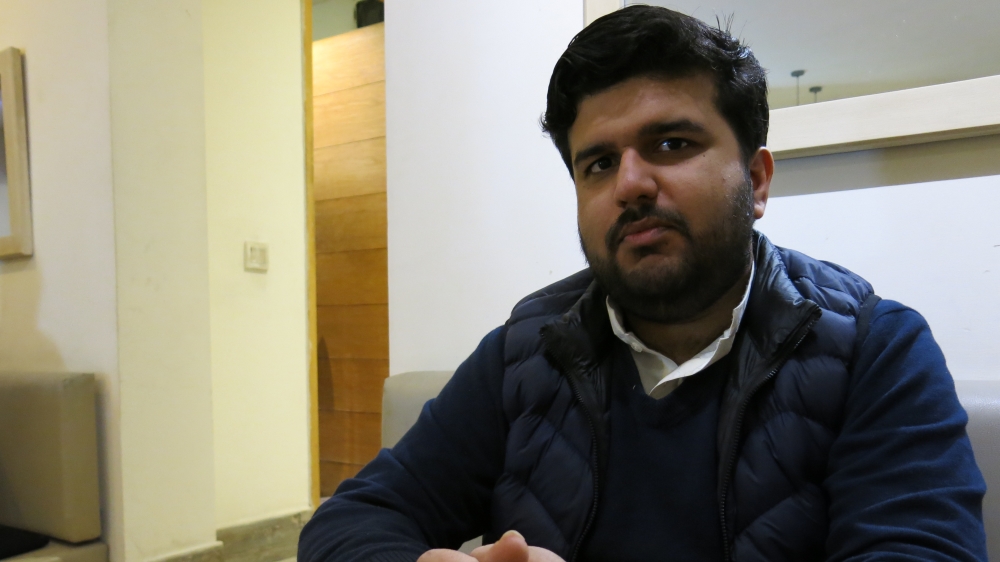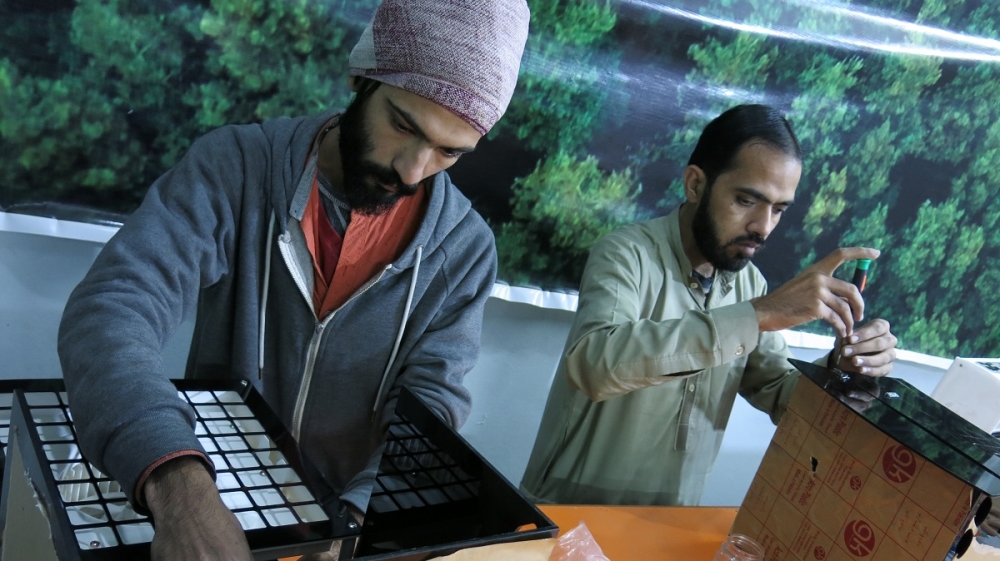In ‘Smog-istan’, not all Pakistanis are created equal
Pakistan’s Lahore has some of the most toxic air on the planet, but not all of its residents suffer its effects equally.

Lahore, Pakistan – Walking through the streets of Lahore’s old city, once home to Mughal royalty but now overtaken by a maze of ramshackle shops and commercial buildings built seemingly on top of one another, you can see a thin layer of translucent brown air hang just above street level.
“We have been getting sore throats, colds and fevers,” says Khurram Shehzad, 35, a salesman at a hardware store, covering his mouth with a scarf. “Our eyes burn, and our throats become dry. I’ve been coughing a lot [this year].”
Keep reading
list of 4 itemsCould shipping containers be the answer to Ghana’s housing crisis?
Thousands protest against over-tourism in Spain’s Canary Islands
Holding Up the Sky: Saving the Indigenous Yanomami tribe in Brazil’s Amazon
It has been like this for months, says Shehzad, throughout what has come to be known in Pakistan’s eastern city of Lahore, home to more than 10 million people, as “smog season”.
Come October, changing weather patterns, high levels of environmental pollution and seasonal crop burning combine to make the air in Lahore some of the most toxic in the world, with the city’s air quality index (AQI) reading regularly topping 500 (the upper limit on most meters), according to AirVisual, an international air quality monitoring service.
The AQI is a measure formulated by the United States’ Environmental Protection Agency (EPA) to measure how healthy or polluted air is, and takes into account levels of five major air pollutants.
Any reading higher than 100 is considered “unhealthy”, with readings higher than 300 considered “hazardous”, according to international standards. Pakistan’s classification system for AQI considers levels up to 200 to be “satisfactory”.

In 2015, an estimated 135,000 Pakistanis died due to air pollution, a study published in the medical journal The Lancet found. Perhaps more crucially, the study found that air pollution cost Pakistanis more than 42.3 million disability-adjusted life years – averaged out over Pakistan’s cities, where air pollution is concentrated, that amounts to more than a year off every single urban citizen’s life.
In Lahore, a growing metropolis that is a hub of commercial activity in Pakistan’s Punjab province, the AQI during the four months between October and January rarely dips below “hazardous” levels. This year, for the first time ever, the provincial government shut down schools for three days due to hazardous air quality, asking citizens to remain indoors as much as possible.
For many in Pakistan, where the average per capita income is less than $1,600 a year, staying indoors, however, is simply not an option.
‘We don’t eat that day’
“My whole family can eat [only] because I am running this pushcart,” says Jalal Hazrat Syed, a 24-year-old migrant to Lahore who sells household electrical equipment off a wooden cart in the old city. “If I shut it down, what will they do?”
“It’s easier for those who work in offices. If I don’t work for a day, we don’t eat that day.”
This year, the government and activists have been encouraging citizens to wear filter face masks to protect themselves while outdoors in the smog, as well as to install air purifiers at home to filter the air.
The main danger from the smog is high levels of particulate matter that is less than 2.5 microns in diameter, known as PM2.5. Such particles can be absorbed directly into the blood and organs after being breathed in, and have been linked to higher rates of cardiovascular disease, respiratory problems and other diseases.

Pakistan’s standard for “safe” levels of PM2.5 in the air is 35 microns per cubic metre. At the peak of smog season, the level was regularly more than 15 times that amount.
For many in Pakistan, however, buying air purifiers for their homes or workspaces is out of the question, given their high cost.
“We would see the smog descend in the evenings, mostly,” said Faiz-ul-Islam, 30, a tea seller in the city’s congested Shah Alami market. “It is unlikely, given I earn 15,000 rupees a month [$96], that I would be able to buy an air purifier.”
Most air purifiers in Pakistani stores are imported, with prices starting at about 30,000 rupees ($194), or roughly double the monthly minimum wage. Prices for face masks certified to filter out PM2.5 particles are more affordable, however, with most masks retailing for roughly 200 rupees (about $1.30).

Islam says he has no choice but to go to work, no matter what the air quality, because he needs to earn a living.
“I cannot survive for a single day without going outside and working,” he says. “[If we are forced to stay home], I will be forced into debt, and it will take months to work it off.”
A new generation of Pakistani activists, however, is working to change all that.
‘We work together, or die together’
Young Pakistanis have taken on a leadership role in demanding that the government apply more sustainable environmental policies and take climate change more seriously.
In September, thousands of young people marched in 26 cities across the country to register their protest against unsustainable climate policies, joining a global movement dubbed the Global Climate Strike.
Nida Afzal, a student at Lahore’s Punjab University, was among those marching.
“[If] I am living under a system that is oppressing me and doesn’t allow me to speak the truth, then I should leave that system, right?” she says. “That seems to be anarchist, but it is really not anarchist. It is about communicating your opinion to power.”
Afzal, 20, has been working on environmental issues for more than five years, ever since her mother died from liver disease linked to the quality of water in her middle-class Lahore neighbourhood.
“Students are now [engaging in this activism] because they know their rights,” she says. “[Authorities] don’t argue with us the same way, because they know … that we really shut them up. That’s the pride of this movement. How Greta [Thunberg] speaks, you know?”

Afzal says the time for governments to act is fast running out, and that for her, “it is do or die now”.
“We have known about climate breakdown for 30 years, and we have been warned by scientists […] We have now taken that stand, that we have to do something, because if we don’t work together, we die together.”
Other young activists say that they target other students and younger people, because they find it difficult to convince those who are middle-aged or older.
“[Young people] are easier to convince. It is more probable that a young person is more aware of this issue than someone in their mid-30s,” says Raza Goraya, 25, a lawyer who co-founded the Clean Air Campaign in Lahore.
Goraya warns, however, that opposition to sustainable policies appears to be based in a paradigm that pits development against environmentally friendly policies.
“It is ingrained that [pollution] is necessary. That development with sustainability being brought into the equation is not possible, not on a fast pace.”
There are, however, hurdles to climate activism – especially adapting global models of protest to Pakistan, some young activists explain.

Afzal works with the UK-based eXtinction Rebellion (XR), a climate activism group that conducts civil disobedience protests where activists court arrest in order to force authorities to take notice of climate change.
In Pakistan, however, Afzal says it is more difficult to conduct those kinds of protests.
“They couldn’t happen here, because people are scared. Over there, people are educated and very privileged. Their protests are flooded with middle-class white people, who are privileged,” she says.
As elsewhere, however, she believes privileged Pakistanis will have to use their social power to agitate for change.
“The people will have to come forward and say, us educated people. A labourer cannot come forward to put his life and his wages in danger to say that they don’t accept corporations. We should not expect that, either. We need to work with them and work for their rights, but we should not expect them to be revolutionaries.”
‘The biggest gap’
Pakistan’s government dismisses criticism of its policies, saying it is taking effective steps to take on the smog crisis.
According to a United Nations Food and Agriculture Organisation (UNFAO) report commissioned by the Punjab government, roughly 43 percent of the province’s air pollution is attributable to vehicle emissions. A further 24 percent is from industrial emissions, 20 percent from the burning of crops in the winter season, and 12 percent from the country’s mainly coal- and furnace oil-fired power plants.
“We have identified that it relates to petroleum and oils that we import or manufacture in our refineries,” says Tanveer Ahmed Warraich, director general of the provincial Environmental Protection Agency. “The government wants that whatever fuel we import, it must be of better quality.”
Currently, Pakistan uses Euro-II standards for the quality of fuels used in vehicles, which allows for higher levels of pollutants. For example, the sulphur content in Euro-II grade diesel fuel is roughly 50 times higher than current global standards.
Vehicle inspection standards, however, remain lax, and many inefficient or higher polluting vehicles continue to ply Pakistan’s roads. Warraich said his agency aims to impound 20 vehicles a day after spot checks on Lahore’s roads.

According to a 2017 Smog Policy, the government is also working on reducing industrial emissions, especially from the more than 10,000 brick kilns scattered across Punjab province. The government is incentivising brick kiln owners to switch to more efficient “zigzag” technology at their kilns.
On crop burning, Warraich said more than 400 farmers were arrested this year for burning the stubble from the rice harvest to clear their fields for the upcoming wheat season.
Others, however, say the action is simply not fast enough to take on what is a “crisis”.
“A lot of the measures that were supposed to be immediately implemented, I am yet to see evidence of that,” said Attiya Noon, an environmental activist who sits on the government’s anti-smog committee.
“That’s the biggest gap, that you see political will, you see action even in terms of these meetings … however, it remains to be seen when and how it will be implemented.”
For those working on the streets of Lahore, action cannot come too soon.
“When the smog was bad [this year], we’d tell our kids to stay indoors, in their own rooms,” says Shehzad, the electrical store worker. “But if I stay at home, how will we eat? The government won’t help me.
“Whether we are sick, or whatever happens, we have to work.”
Asad Hashim is Al Jazeera’s digital correspondent in Pakistan. He tweets @AsadHashim.